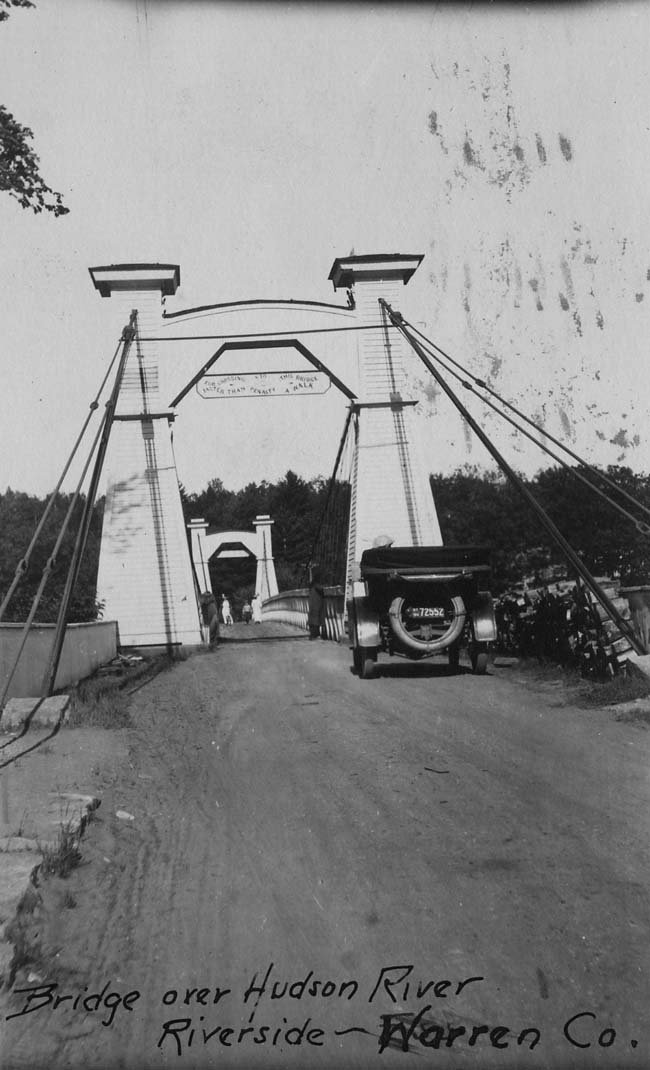The Bridges of Riparius
Riparius Bridge from Train Station today, built by Warren County in 1919. The station was built the same year by the Delaware & Hudson Railroad.
In Latin, "Riparius" means "belonging to a river bank." That made it a good replacement for "Riverside," which is what the people of this scenic hamlet on the Hudson called their community before 1886.
That's when the first post office opened and the townspeople were challenged to come with a new name. The reason: "Riverside" had already been claimed by another post office in the state.
As a name, "Riparius" was an elegant solution and highly distinctive. So far as we have been able to ascertain with a quick Google search, no other community in the nation bears the Riparius name. Just as unique is this hamlet's setting. It's one of the southern Adirondack's most classically scenic spots.
In the early 1800s, John Folsom acquired land on both sides of the Hudson River and so was able to establish a ferry at what would be called Folsom's Landing. That paved the way in 1872 for a beautiful single-lane suspension bridge that the shareholders who funded it called the "Folsom Landing Central Bridge." That’s what you see below.
William W. Durant ran stagecoaches across this bridge, transporting passengers who arrived by train to destinations on Loon Lake, Schroon Lake, and Brant Lake. The toll was 30 cents per carriage. Pedestrians paid 3 cents to walk across and 2 cents more to walk a horse.
The original station built by Thomas Durant around 1870 to serve the Adirondack Railroad is no longer there, but the station that the Delaware & Hudson Railroad built on the same spot in 1919 still is.
The availability of train service led D.G. Yuengling to build a brewery and bottling plant near the station. He owned the Barry House on Brant Lake and this new enterprise gave him a good business rationale for spending more time there. Across from the station, he also purchased the Riverside Hotel, a commanding three-story wooden structure later destroyed by fire.
Warren County built the new bridge in 1919, the same year the D&H built its new station. At 300 feet, it’s about the length of a football field. Imagine this bridge beside the George Washington Bridge: at 3500 feet, it's more than ten times longer, which just goes to show what a very different river the Hudson becomes in the course of 200 miles.
Viewed together, the the station, the bridge, the mountain in the background, and the gleaming waters of the Hudson give you the sense that you've truly gone back in time.
During Prohibition, this section of road was a favorite among bootleggers, Glenn Pearsall tells us. They mostly cruised Route 9 between New York and Montreal, but when chased at high speeds by cops they would veer off onto Route 8 to make their escape. After barreling across the Riparius Bridge, they would turn off their lights and duck behind the Riverside Hotel to hide. In time, the cops wised up and set up road blocks on Route 9.
Today, you might pass over the suspension bridge on your way to Gore or deeper into North Country for great skiing, or to access a route of snowmobile trails. In the summer, you might admire the rushing Hudson under the bridge as you return to your inn on the nearby Loon Lake or Friends Lake.
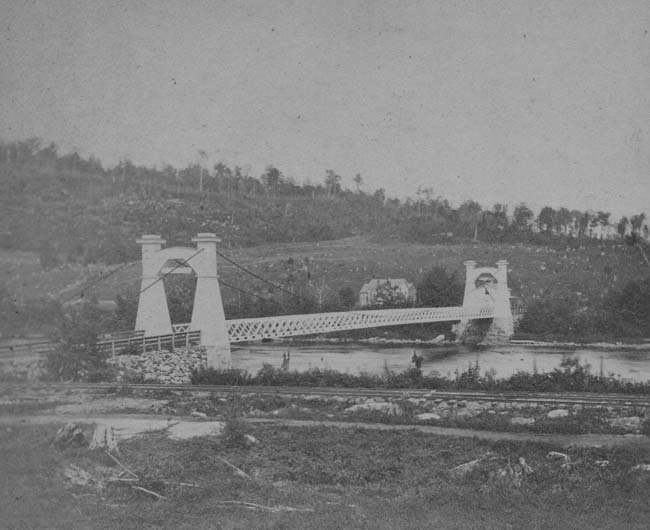
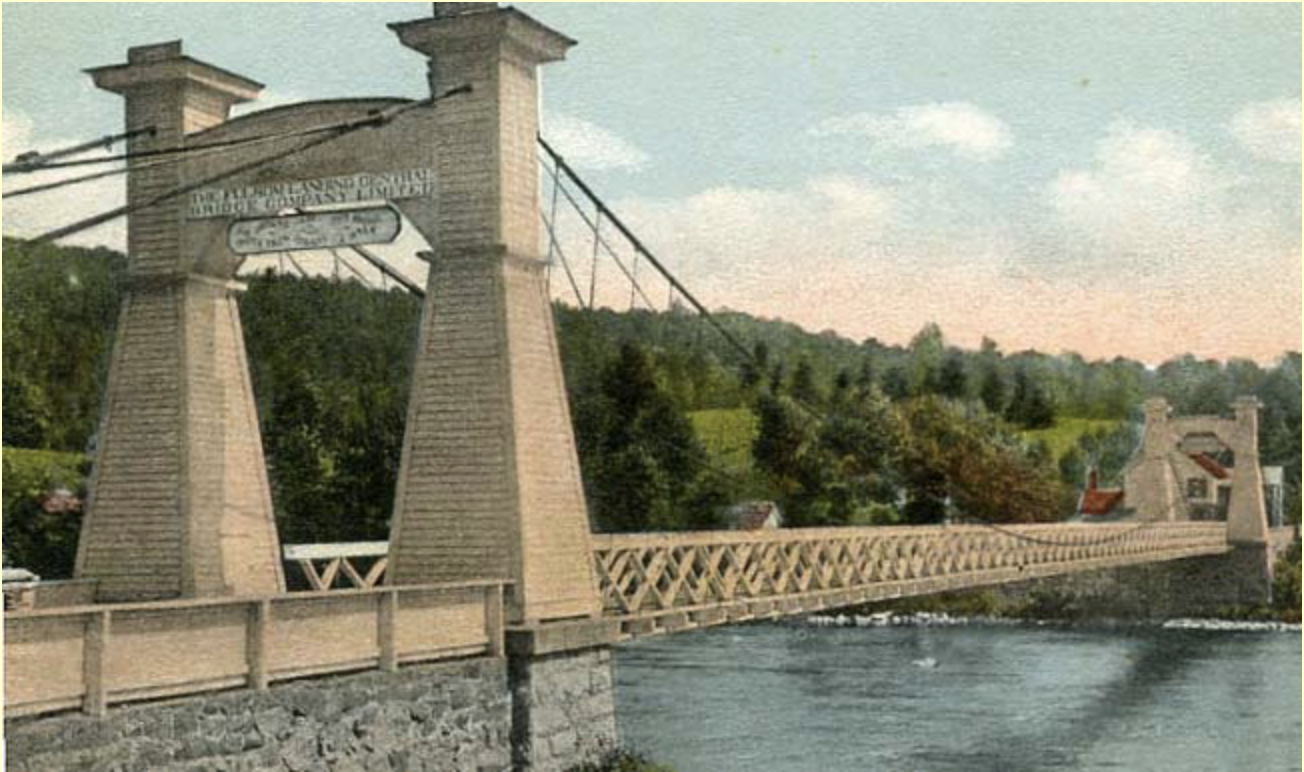
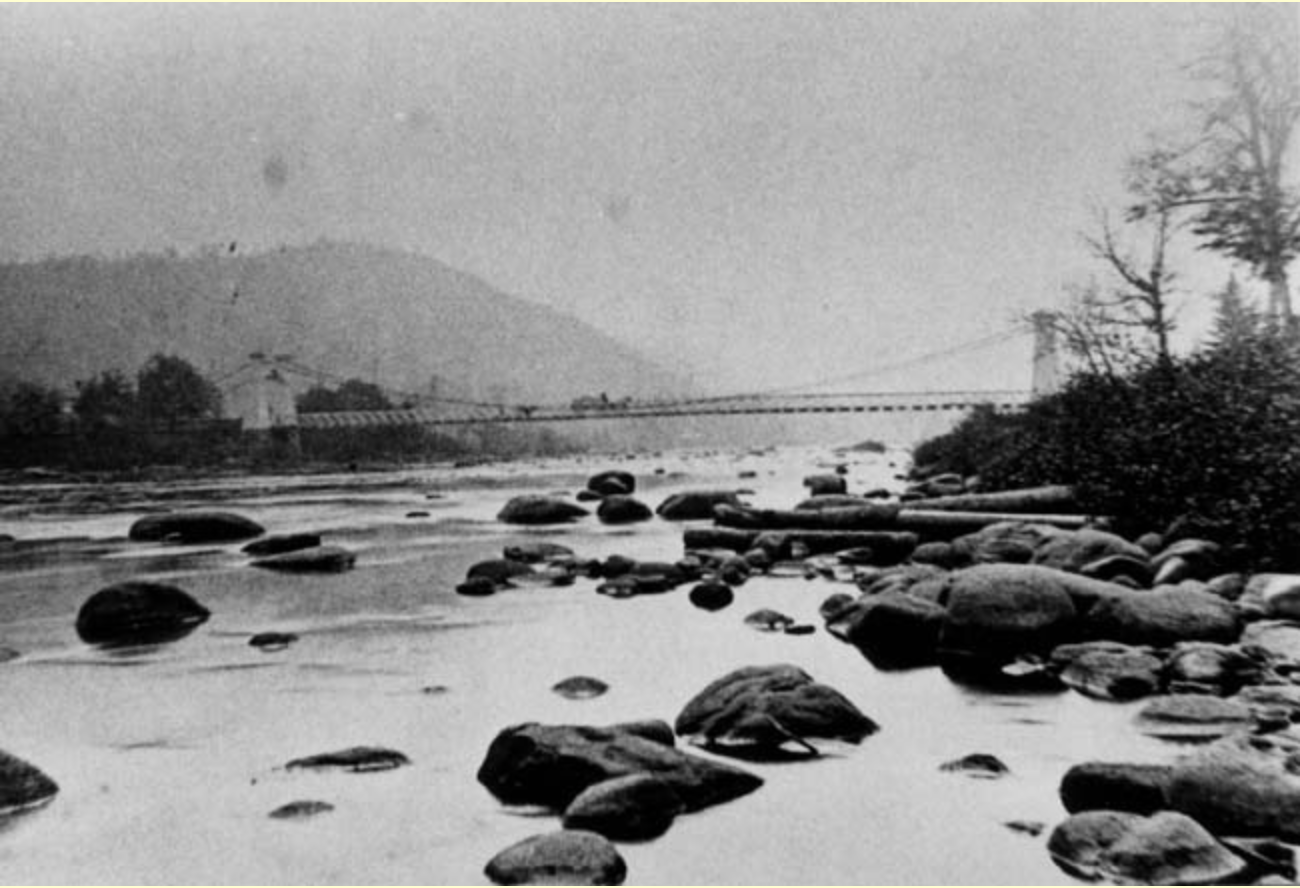
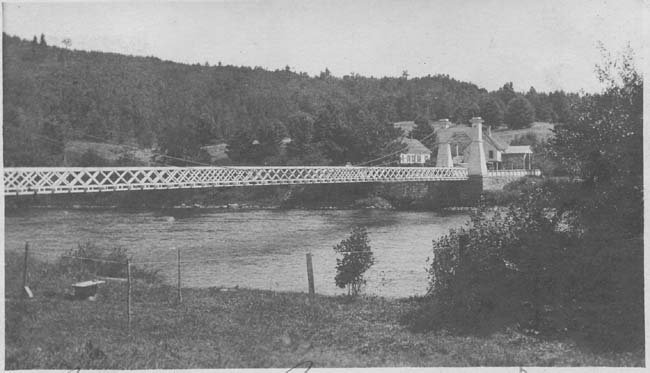
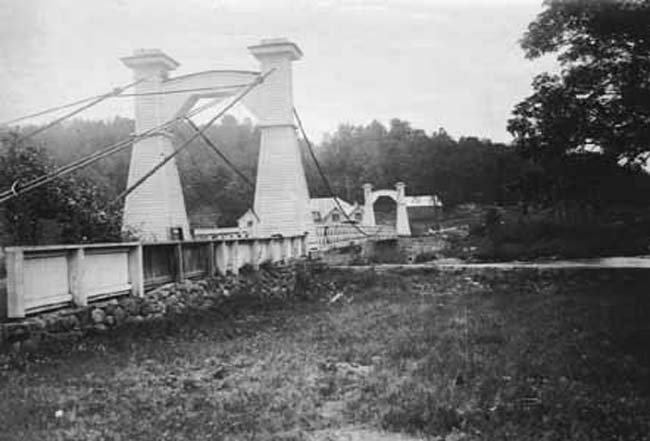
Carmelina Albanese is a Skidmore College senior majoring in English and minoring in Environmental Studies and Science.


